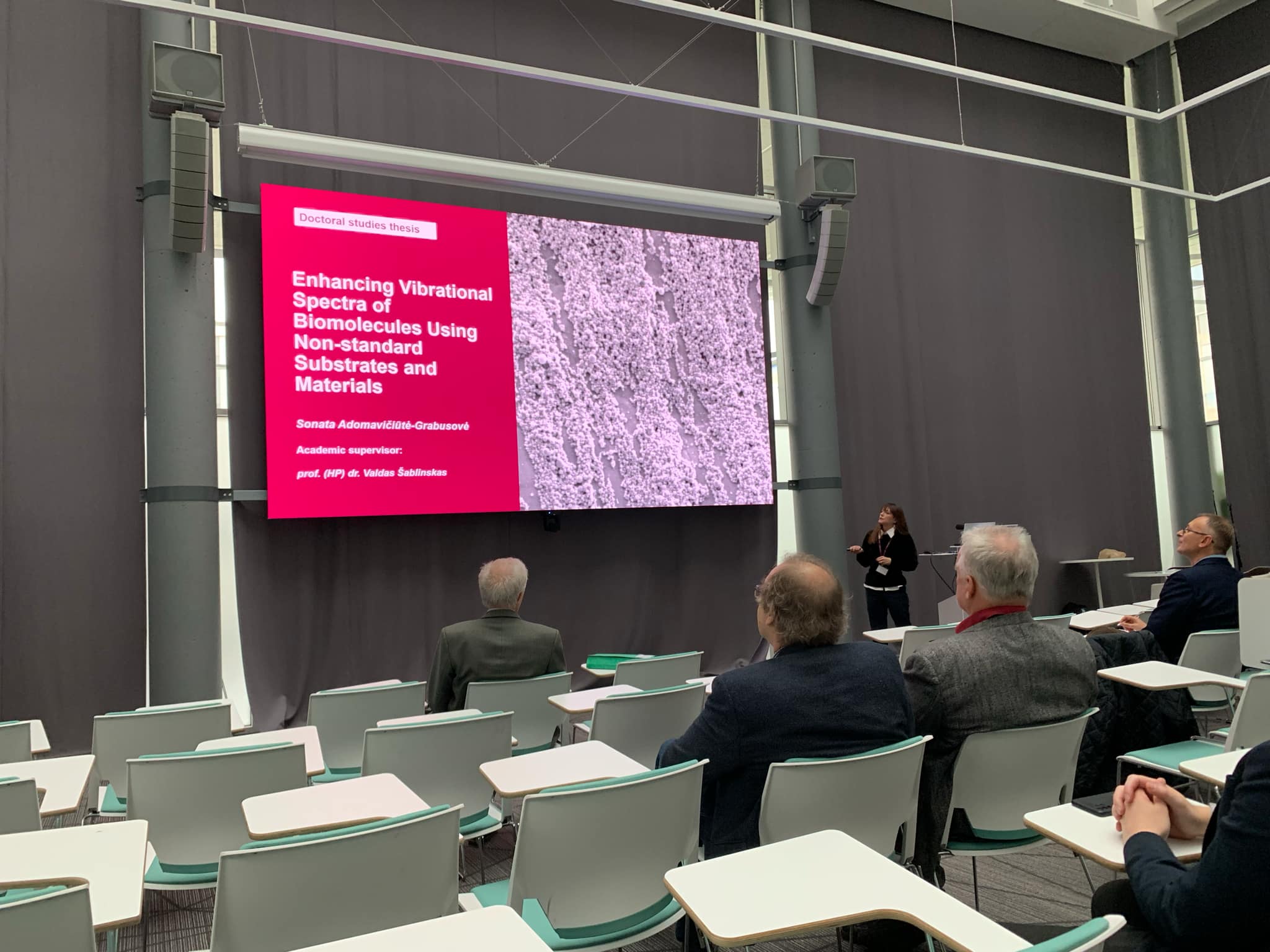Sonata Adomavičiūtė-Grabusovė
„Enhancing Vibrational Spectra of Biomolecules Using Non-standard Substrates and Materials“
This thesis shows the important role of SEVS techniques in advancing spectroscopy, despite the challenges that persist in optimizing these methods. As a response to many of the persistent challenges in advancing these techniques, this research focuses on several kinds of material manipulation to either improve the existing or identify novel substrates that could be utilized to boost the SEVS efficiency. This thesis employs both Surface Enhanced Infrared Absorption (SEIRA) and Surface Enhanced Raman Scattering (SERS) methods to enhance the detection of biologically relevant molecules. This includes improving the reproducibility and specificity of SERS substrates. This also includes expanding the applicability of the SEIRA technique for direct and remote sensing applications, in conjunction with enhancing optical fiber performance for in situ research.

Edgaras Kolomiecas
"Chemical Evolution of Galactic Globular Cluster 47 Tucanae"
For many years, it was thought that Galactic globular clusters (GGCs) are homogeneous systems, containing stars of uniform age and chemical composition. However, research over recent decades has shown that nearly all GGCs contain multiple stellar populations, characterized by variations in the abundances of light elements (e.g., O, Na, Al), along with distinct kinematic properties. The identity of the polluter stars that enriched the second population stars with synthesized material and caused the now observable abundance patterns in GGCs remains unknown. To explore potential enrichment scenarios and identify possible polluter candidates, we determined the abundances of Sr, Zr, Ba, and Na in the atmospheres of 261 RGB stars in the GGC 47 Tuc. The abundance analysis was based on archival spectra of RGB stars in 47 Tuc, obtained with the UVES and GIRAFFE spectrographs. For the first time, a correlation between the light s-process element Zr and the light element Na was detected in GGC stars, alongside an anti-correlation between Zr abundance and distance from the cluster center. Similarly, a correlation between Sr and Na was detected for the first time in GGC stars. These results suggest that the first population polluter stars in this GGC synthesized not only light elements but also certain s-process elements, with the most likely polluters being low-mass AGB stars or fast-rotating massive stars.

